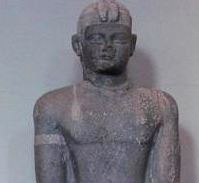Reign c 620–600 BCE Parents Senkamanisken Grandparent Atlanersa Great-grandparents Taharqa, Tantamani | Consort Mediken ? Mother Nasalsa Siblings Aspelta Nephew Aramatle-qo | |
 | ||
Similar Aspelta, Senkamanisken, Atlanersa, Aramatle‑qo | ||
Onur zder anlamani i sterdi m 2016
Anlamani was a king of Nubia or Kush who ruled from 620 BC and died around 600 BC.
Contents
Under his reign, Kush experienced a revival in its power. Anlamani was the son of Senkamanisken, his predecessor, and the elder brother of Aspelta, his successor.
Anlamani used titles based on those of the Egyptian pharaohs.
Reign
Anlamani is particularly well known from a stela discovered in a temple at Kawa. The stela records his mother Nasalsa's visit to Kawa to watch his official coronation as king. It also notes his decision to make four of his sisters as "sistrum-players" in the National temple of Amun at Jebel Barkal and reports the king's campaign against certain nomadic tribes who threatened Kawa.
Two granite statues of this king have been found in Jebel Barkal while a block from Meroë bearing his name is known. One of the statues is today located in the National Museum of Khartoum, Sudan) while the other (a 12 foot high statue) is in the Boston Museum of Fine Arts. Anlamani was buried in pyramid Nu. 6 in Nuri. In his tomb stood a large chamber, decorated with religious texts, and his sarcophagus.
In 592 BCE, under the reign of his brother Aspelta, the Egyptian king Psamtik II launched a campaign against Kush which resulted in the sack of Napata.
